Inside the Factory - Season 2
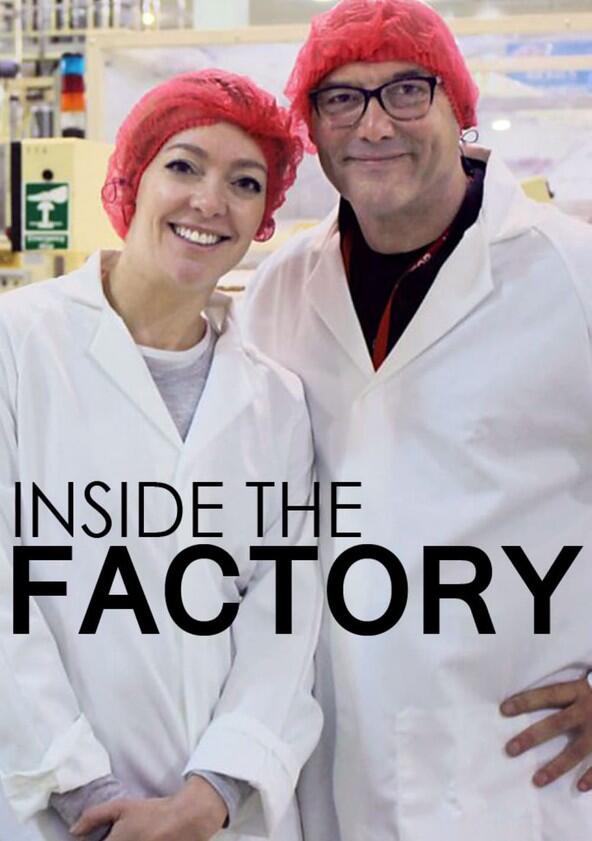
Season 2
Exclusive access to some of the largest factories in Britain to reveal the secrets behind production on an epic scale.

Episodes
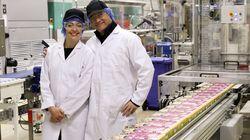
Cereal
Gregg Wallace receives a load of corn fresh off the boat from Argentina and follows its journey through the largest breakfast cereal factory in Europe as it is cooked, milled and flavoured to become Crunchy Nut Cornflakes. He discovers how they can produce more than a million boxes of cereal every 24 hours and distribute them all over the UK, Europe and across the globe, as far away as Malaysia.
Meanwhile, Cherry Healey finds out about the immunity-boosting powers of vitamin D, which is added to many of our breakfast cereals. One in five of us is deficient in the sunshine vitamin and yet the latest research shows that having optimum levels can potentially prevent you from getting the common cold by up to 50 per cent. Cherry also discovers the effect that skipping breakfast has on our cognitive function - studies show that breakfast skippers perform seven per cent worse in attention tests - and she also follows the production of the nation's best-selling cereal, Weetabix, and learns how every single grain of wheat that is milled for these wheat biscuits is grown within a 50-mile radius of the factory.
Historian Ruth Goodman sits down to a Victorian breakfast of lobster and pig's head to reveal how the average Victorian was gorging down a mind-boggling 4,500 calories a day and that breakfast cereal was invented as a healthy alternative. She also discovers that when it comes to advertising cereal, nostalgia certainly seems to pay - the six top sellers in the UK today were all invented more than 30 years ago and the cereal industry is now worth over one and a half billion pounds.
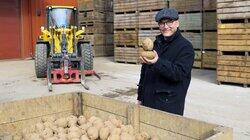
Crisps
The British love eating crisps. So much so that we get through a staggering half a billion crisps a day - and that takes 17 million potatoes. So why do we love the humble fried potato snack so much, and what are the secrets behind making the perfect crisp?
In the second episode of Inside The Factory, Gregg Wallace and Cherry Healey go in search of these answers and discover plenty of surprising facts along the way.
We'll see Gregg at the largest crisp factory on earth - Walkers factory in Leicester - as he follows 27 tonnes of potatoes as they are peeled, sliced and fried to make more than five million packets of crisps every 24 hours. He'll discover how each bag is filled with nitrogen to keep the crisps from going stale - and if you ever wondered how a crisp gets it flavour then we'll get to see the inside of the factory's development kitchen, where seasoning begins its crisp life as a real food dish.
Meanwhile Cherry Healey discovers the secrets of perfect crisp potatoes, and how it is all down to a potato's sugar content. She also finds out that our noses play a central role in how things taste and ambiance can be as big factor as ingredients. Plus she follows the production of Monster Munch, where the factory transforms 96 tonnes of corn into 12 million monster feet every single day.
And historian Ruth Goodman investigates who really invented the crisp: was it the Americans, as is often cited, or the British? Ruth cooks up the earliest known recipe for crisps to uncover the truth.
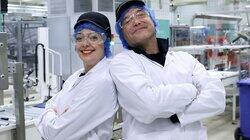
Baked Beans
Today in the UK we get through more than two million cans of baked beans every day, with the average UK household consuming 10 tins of canned food a week. Gregg Wallace helps to unload 27 tonnes of dried haricot beans from North America and follows them on a one and a half mile journey through the Heinz factory in Wigan - the largest baked bean factory in the world - making more than three million cans of beans every 24 hours.
He'll discover how a laser scrutinizes every single bean; how the spice recipe for the sauce is a classified secret known only by two people; and, most surprisingly, how the beans are not baked at all!
Meanwhile Cherry Healey follows the journey of her discarded baked bean can through a recycling centre and onto the largest steelworks in the UK, where she watches a dramatic, fiery process that produces 320 tonnes of molten steel - enough to make eight million cans.
She also takes a can that is 14 months after its ‘Best Before' date to a lab at the University of Coventry and is amazed when tests reveal it has the same Vitamin C levels compared to fresh tomatoes. The lab also proves that a 45 year-old tin of Skippers is still fit to eat.
And historian Ruth Goodman looks at how tinned food was invented to improve the nutrition of sailors to prevent them developing scurvy on their long voyages at sea. She'll also relate how Henry Heinz first marketed baked beans in the UK in the early 1900s - making them a family favourite.
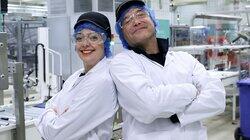
Bicycles
Brompton's bicycle factory in West London is the largest in Britain, producing 150 of its distinctive folding bicycles every 24 hours.
In the fourth episode of Inside the Factory Gregg joins a multi-stage manual production line to make his very own bike. He'll learn how to put together 1200 individual parts. He'll also attempt to braze a bike frame together using extreme heat of a thousand degrees, a skill that takes years to master. He'll visit a leather saddle maker in Birmingham that's been making saddles for 150 years and discover how they use cowhide from UK and Ireland cows because the cold weather means they have thicker skins.
Meanwhile, Cherry Healey gets some tips from Cycling Team GB to help us all improve our pedal power. She also learns how to paint a bike frame fit for the British weather using an electro-static charge and a 180 degree hot oven. Cherry also investigates why cyclists and trucks are such a deadly combination: in London alone there have been 66 fatalities since 2011 and half of them were collisions with a truck.
And historian Ruth Goodman reveals that folding bikes date back to the 1870's, and how 70,000 folding 'parabikes' were manufactured during World War II, some of which played a role in the D-Day landings. She'll also find out how the invention of the safety bicycle in the late 1880's was used by Suffragettes to ride to rallies and spread the word in their fight for equality.
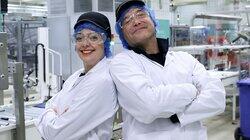
Sweets
Gregg Wallace helps to unload a tanker full of sugar from Norfolk and follows it through one of the oldest sweet factories in Britain to see how over 500 workers, as well as some mind-boggling machines, transform it into over a hundred million individual sweets within just 24 hours. He discovers how the factory that produces Lovehearts could be the most romantic in the world because one in four of the people who work there are in a relationship with each other, how they make 5,000 Fizzers a minute using a tablet-pressing machine that uses 3 tonnes of pressure to create each sweet, and meets the man in charge of making three quarters of a million Fruity Pop lollies every day.
Meanwhile, Cherry Healey is let inside the research and development department and experiences for herself how hard it is to come up with a new product, as she attempts to invent her own version of sherbet using citric acid and sodium bicarbonate. She also finds out how they put the letters in seaside rock by making a giant version and then stretching it to the right size, and is given special access to the Fisherman's Friend factory in Lancashire to discover how a local family turned a niche product into a worldwide success.
And historian Ruth Goodman investigates how sweets were first invented and discovers that, in the Middle Ages, they were used as a medicine and thought to reduce flatulence. She also finds out about the human cost of Britain's sweet tooth in the 18th century and how an abolition movement instigated a sugar boycott which helped to end the slave trade.

Shoes
Gregg Wallace joins a human production line in the largest sports shoe factory in the UK to see how they produce 3,500 pairs of trainers every 24 hours by sewing 32 million individual stitches and using 140 miles of thread. He makes his own pair of shoes and discovers how they put together 27 different pieces made from eight different materials which require auto- and manual stitching, and finishing with a 'roughening' robot and a hot oven. He also meets the man who comes up with new designs, including trainers inspired by the three most popular pub names in England.
Meanwhile, Cherry Healey gets hands-on in a tannery to help them process thousands of rawhides into finished leather for the nation's shoes, and finds out how a ballet shoe company painstakingly turns 37,000 square meters of satin into a quarter-of-a-million ballet shoes - some of which only last for one performance. She also gets to design her own court shoes at Cordwainers College in London, where she learns how to turn creative ideas into commercial products - last year, sales of women's designer shoes topped £532 million.
And historian Ruth Goodman reveals how, when the sewing machine was first introduced into shoe factories in the mid-19th century, traditional shoemakers went on strike, rebelling against joining a restrictive production line. She also traces the surprising origins of the humble trainer to the back streets of Bolton, where Joe Foster invented his running spike in 1895, above his father's sweet shop, and discovers that Reebok trainers were originally British.
Recently Updated Shows

Shrinking
Shrinking follows a grieving therapist who starts to break the rules and tell his clients exactly what he thinks. Ignoring his training and ethics, he finds himself making huge, tumultuous changes to people's lives… including his own.

Wild Cards
Wild Cards follows the unlikely duo of a gruff, sardonic cop and a spirited, clever con woman. Ellis, a demoted detective, has unfortunately spent the last year on the maritime unit, while Max has been living a transient life elaborately scamming everyone she meets. But when Max gets arrested and ends up helping Ellis solve a local crime, the two are offered the opportunity to redeem themselves, with Ellis going back to detective and Max staying out of jail. The catch? They have to work together, with each using their unique skills to solve crimes. For Ellis, that means hard-boiled shoe leather police work; for Max, it means accents, schemes and generally befriending everyone in sight, while driving Ellis absolutely nuts. Against the backdrop of beautiful Vancouver — with all its unique, charming, and even contradictory neighbourhoods and subcultures — the two will have to learn what it means to trust another person and maybe actually become partners.
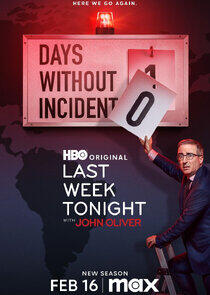
Last Week Tonight with John Oliver
On Last Week Tonight with John Oliver, John Oliver presents a satirical look at the week in news, politics and current events.

School Spirits
When Maddie finds herself trapped in afterlife limbo at her high school, she decides to investigate her own mysterious disappearance.
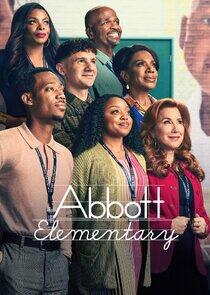
Abbott Elementary
In this workplace comedy, a group of dedicated, passionate teachers — and a slightly tone-deaf principal — are brought together in a Philadelphia public school where, despite the odds stacked against them, they are determined to help their students succeed in life. Though these incredible public servants may be outnumbered and underfunded, they love what they do — even if they don't love the school district's less-than-stellar attitude toward educating children.